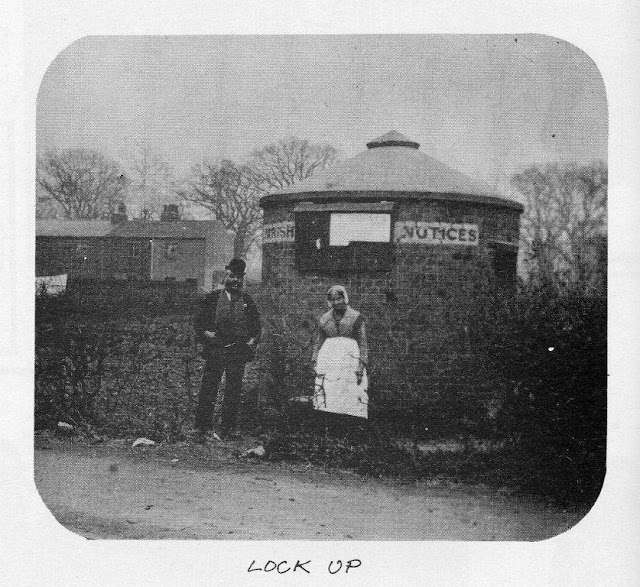I have located just four remaining lock-ups in the Greater London area.
The lock-up in Cranford High Street dates to 1838 and was later used as a mortuary.
It seems to be a Grade 11 listed building but I have been unable to find the actual listing.
I am grateful to Maxwell Hamilton for allowing me to copy his Flickr photographs.
CRANFORD
Photo's by Maxwell Hamilton with expressed permission.
ooooooooooooooooooooooooooooooooooooooooooooooooooooooooooooooo
Information about the lock-up at Hampstead is displayed on a wall plaque :
HAMPSTEAD
Photo's by Mike Smith with expressed permission
I am grateful to Mike Smith for the use of his photograph's.
Photo by Chris Gunns
I am grateful to Chris Gunns for the use of his Geograph photograph
ooooooooooooooooooooooooooooooooooooooooooooooooooooooooooooo
The lock-up at Stoke Newington is situated in Red Lion Lane and dates to 1824.
An engine house was first built on the site in 1821
and this watch house with lock-up was added in 1824.
STOKE NEWINGTON
Photo by Lucy Fisher with expressed permission.
I am grateful to Lucy Fisher for allowing me to copy her Flickr photograph.
ooooooooooooooooooooooooooooooooooooooooooooooooooooooooooooooooooooooooo
The lock-up at Biggin Hill is situated in Jail Lane, TN16 3AX and now
forms part of the
Old Jail public house. It dates to c.1800.
BIGGIN HILL
OS Grid Reference: TQ4340759353
OS Grid Coordinates: 543407, 159353
Latitude/Longitude: 51.3152, 0.0564
OS Grid Coordinates: 543407, 159353
Latitude/Longitude: 51.3152, 0.0564
Photo by Ian Capper.
I am grateful to Ian Capper for the use of his Geograph photograph.
The property was Grade 11 listed 29.6.1973
(No.358591) and described as :
C18. 2 buildings. Sate roof. 2 storeys, weatherboarded 1st floor and brick ground floor painted over.Right side C19 chimney. Left side has 1st floor stable door.
Listing NGR TQ4340759353
Source: English Heritage
Listed building text is © Crown Copyright. Reproduced under licence.
oooooooooooooooooooooooooooooooooooooooooooooooooooooooo
The lock-up at Twickenham has long gone but there are records of it to be seen at
http://www.twickenham-museum.org.uk/detail.asp?ContentID=247
together with an 1840's print of the lock-up.
It appears that Church Vestry records refer to the Watch House, Cage, Lock-up, Crosshouse and Roundhouse which over a period of time was moved to different locations. In 1684 the Vestry ordered that the 'crosshouse' in the town centre be boarded up and converted into a cage.
In 1737 the Vestry constructed a Watchhouse in the town centre and in 1764 it was moved to the Common.
oooooooooooooooooooooooooooooooooooooooooooooooooooooooooooooooo
The lock-up at Twickenham has long gone but there are records of it to be seen at
http://www.twickenham-museum.org.uk/detail.asp?ContentID=247
together with an 1840's print of the lock-up.
It appears that Church Vestry records refer to the Watch House, Cage, Lock-up, Crosshouse and Roundhouse which over a period of time was moved to different locations. In 1684 the Vestry ordered that the 'crosshouse' in the town centre be boarded up and converted into a cage.
In 1737 the Vestry constructed a Watchhouse in the town centre and in 1764 it was moved to the Common.
oooooooooooooooooooooooooooooooooooooooooooooooooooooooooooooooo
.jpg)
.jpg)
.jpg)
.jpg)
.jpg)

















